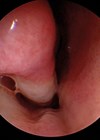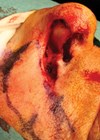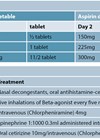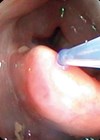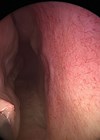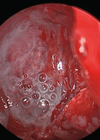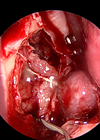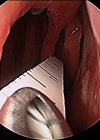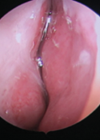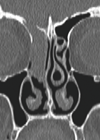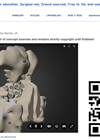How I Do It
Endoscopic ‘syringe and cutdown’ technique for nasolacrimal duct obstruction in children
This article presents a novel yet simple technique to help in the management of congenital NLDO. The authors propose it as a valuable addition to existing standard procedures. Congenital nasolacrimal duct obstruction (NLDO) is a condition encountered within the first...
Random-pattern skin flaps: part 4 - transposition flaps
In the final part of our series on local skin flaps (see Part 1, Part 2 and Part 3) in ENT, the authors describe the usefulness of the transposition-type flap and highlight some examples. Rotational advancement flap Useful for defects...
Chester-gel technique
Umesh Nagalotimath and Robert Temple describe a simple and effective technique for enhancing vision during endosheath use for flexible nasendoscopy. Endosheaths are used to complement the cleaning of flexible scopes. The advantages are time saving for clinicians as this reduces...
Aspirin desensitisation for aspirin-exacerbated respiratory disease (AERD)
In this article, the authors describe the importance of identifying aspirin-exacerbated respiratory disease in patients with chronic rhinosinusitis refractory to standard medical treatment. This can then open the door to considering aspirin desensitisation treatment which, in their hands, has proven...
Awake transnasal laryngeal and pharyngeal biopsy in the unsedated patient
In an attempt to improve the efficiency and flow of patients through a busy ENT clinic, technology now allows the ENT surgeon to consider biopsies in the outpatient setting on a more regular and controlled basis. This can avoid the...
Bipolar microdebrider turbinoplasty
There are a variety of ways to reduce the bulk of hypertrophied turbinates. Kimberley Lau and Showkat Mirza describe their technique which can be used in difficult cases and with minimal morbidity. As ever, one aim should be to avoid...
Endoscopic CSF leak repair using nasoseptal flap
Many of us during training or in established practice will have encountered the complication of anterior skull base CSF leak. This can be a challenging problem to deal with and in this article the authors describe their favoured approach. Cerebrospinal...
Endoscopic DCR
In this interesting article, our experienced colleagues describe their favoured technique for performing endoscopic DCR and share with us the key steps for a successful outcome. Dacrocystorhinostomy (DCR) was historically performed by ophthalmologists for nasolacrimal obstruction using external techniques. The...
Nasal septal perforation repair
Nasal septal perforation repair has traditionally been a great challenge. Many surgical techniques are described, however the success rate of closure has often been poor. Experience from the use of pedicled vascularised mucosal flaps in skull base surgery has been...
A quick and simple approach to correcting the deviated nasal septum
Nasal septal surgery is a very common procedure that we tend to learn as junior trainees. Most of us still find that we have a lot to learn with every deviated septum that we encounter. There is a range of...
Functional Endoscopic Sinus Surgery (FESS) - Part 2
In the first of this two-part series, Martyn Barnes and colleagues discussed indications for functional endoscopic sinus surgery (FESS), the surgical objectives and techniques, patient expectations and the risks of surgery [1]. In this second and final part, the authors...
Functional Endoscopic Sinus Surgery (FESS) - Part 1
In the first of a two-part series, Martyn Barnes and colleagues discuss indications for functional endoscopic sinus surgery (FESS), the surgical objectives and techniques, patient expectations and the risks of surgery. In part two, the authors will discuss how to...


